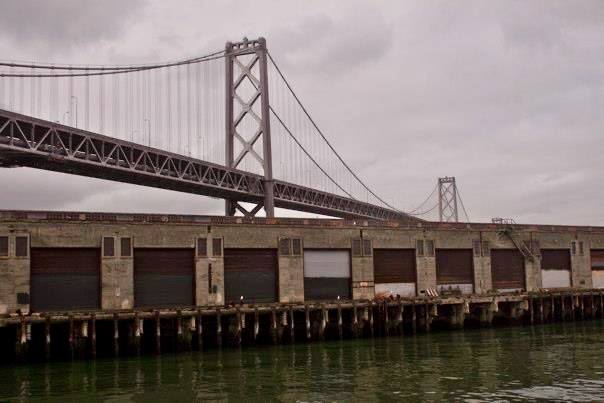
San Francisco waterfront and Bay Bridge. Photo: Jeffrey St. Clair.
On March 11, 2025, Trump’s appointed head of the Environmental Protection Agency (EPA), Lee Zeldin, announced the elimination of environmental justice offices throughout the agency. The EPA has already canceled hundreds of grants that supported marginalized, environmentally-impacted communities; meanwhile, in January, Trump rescinded an executive order signed by Bill Clinton in 1994 which directed each federal agency to “make achieving environmental justice part of its mission.”
These and other moves to end environmental justice efforts by the US government will be disastrous to already vulnerable communities, and are compounded by the rollback or elimination of environmental protections more generally. Yet they also throw into relief long-standing questions posed by environmental justice organizers and scholars: Why have state agencies consistently failed to protect marginalized communities from environmental harm, regardless of political party in power, and despite Clinton’s executive order? What are the capacities and limitations of the state in delivering the kinds of justice that vulnerable communities seek? And what other sources or forms of justice or repair do communities envision, beyond what the state has to offer?
These were some of the questions that motivated my book, Toxic City: Redevelopment and Environmental Justice in San
Over the course of my research, which took place during the Obama administration, I saw how state environmental and health agencies often ignored or dismissed neighborhood concerns, and how enforcement of environmental protections in the neighborhood was uneven, at best. I also witnessed how residents employed strategies both radical and reformist, sometimes working with or through, and sometimes in opposition to or beyond, state institutions—reinforcing the point made by other scholars, such as Jill Harrison, Tracey Perkins, and Erin Goodling, that environmental justice activism has always relied on a diversity of tactics.
Most often, however, state institutions were a poor fit, to put it mildly, for resident’s expansive political goals. One chapter in Toxic City looks at Bayview-Hunters Point resident’s efforts to influence the federal Superfund program and assert a measure of community control over the cleanup, or remediation, of the military shipyard. I argue that their critiques and demands (including economic redistribution, epidemiological studies, and influence over cleanup standards) outlined a project of reparative remediation (similar to concepts of reparative justice) that offered an alternative to the state’s project of risk-based, technocratic remediation. In large part these demands were made through a formal advisory committee which—when it became too contentious—the US Navy simply terminated. Even still—and despite all the barriers, and indeed walls, to participation in the Superfund process—the chapter argues we have much to learn about how residents showed up to meetings and protests year after year, for decades, continuing to articulate the harms they and their families had suffered and the forms of justice they felt they deserved.
What does all this have to do with Trump and current dismantling of the EPA? Although it may be hard to imagine now, in the almost-spring of 2025, there will be a point at which a new political administration takes up the task of rebuilding state agencies and environmental regulations. When that happens, it is important that those with radical political visions are at the table—it’s not enough to return to what a Biden-era EPA had to offer, for example. Those ideas and visions of what a state that pursues and supports environmental justice social movements might look like already exists, honed through decades of struggle, in places like Bayview-Hunters Point.
Copyright for syndicated content belongs to the linked Source link